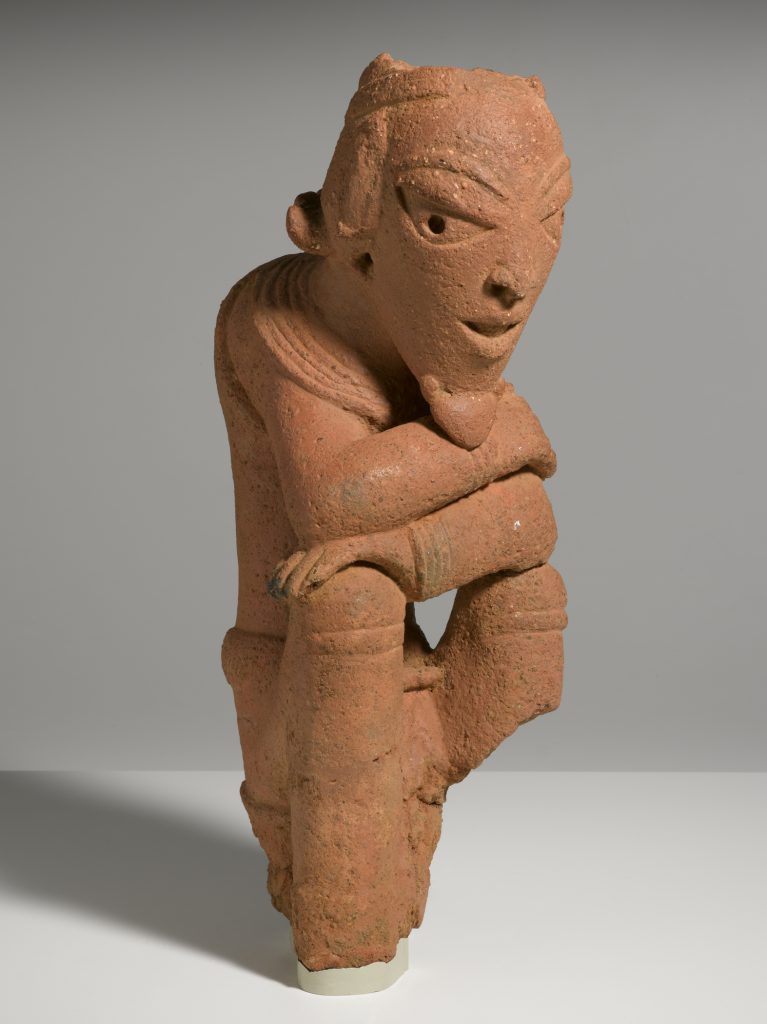Seated Male Figure (work of art)
Artwork Info
Key Ideas
- This is a sculpture of a kneeling male figure with crossed arms. His triangle-shaped eyes are large, with deep pupils, and he has arched eyebrows and a triangular goatee. He is wearing a banded necklace, and the top of his head and the bottom of his left leg are missing. The sculpture is made of coarsely textured terracotta, which means “baked earth” in Italian.
- This sculpture was likely found near Nok, a village in central Nigeria. Nok is a term adopted by art historians and is based on geographic origin rather than the origin of the people who lived there, which is unknown. The Indigenous people of Nok are best known for their iron and terracotta works, which may have influenced the later famous Ife (ee-feh) tradition.
- This seated male figure could have represented an ancestor, ruler, or deity, or it may have been a grave marker or decoration on a sacred building.
Learn More
The Nok civilization of Nigeria was an agricultural and iron-smelting culture, whose terracotta sculptures have been scientifically dated from around 500 BCE to 200 CE. The Nok culture is named for the town of Nok, located near the area in which terracotta sculptures like this one were first discovered. The meaning and function of these sculptures, which range in size from a few inches to several feet tall, is unknown. Some of the sculptures may have represented rulers, ancestors, or deities. Sculptures of human figures with physical deformities might have been used in healing rituals. Certain figures may have served as roof finials (decorative details) to indicate which buildings contained shrines or sacred objects. This custom is still practiced in some areas of West Africa today.
The “thinker” pose of this figure was a favorite of Nok artists. In Nok art, human figures are typically cylindrical in form and are depicted wearing bracelets, necklaces, belts, and headdresses. Triangle-shaped eyes are a common feature of Nok sculptures, as is the use of coarse clay containing grains of mica, quartz, or granite.
Very little is known about the region’s ancient cultures and their art or their relationships to one another. Ancient ceramic artworks such as this seated male figure are often assumed to be made by men because they were deemed to be “sculpture” rather than objects for domestic use. This designation is based on assumed gender roles. These types of objects, like many African ceramics, were often made by women.
tags: function, ritual, power, ancient
Additional Resources
Resources for Teachers:
- Read an article about Nok terracottas.
- Read an article about the Nok culture.
- Watch a short documentary about the Nok heads.
Resources for Students:
- Learn more about the Nok culture.
- Watch a video about the Nok culture.
- Examine another Nok terracotta from the Saint Louis Art Museum.

